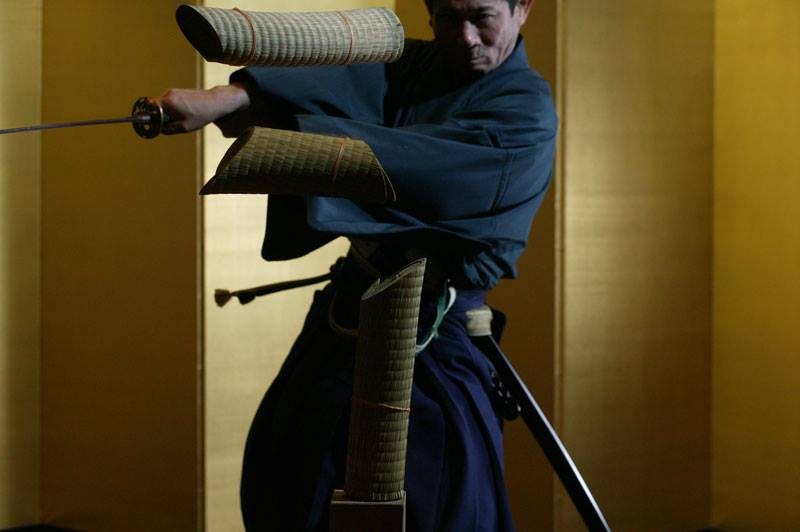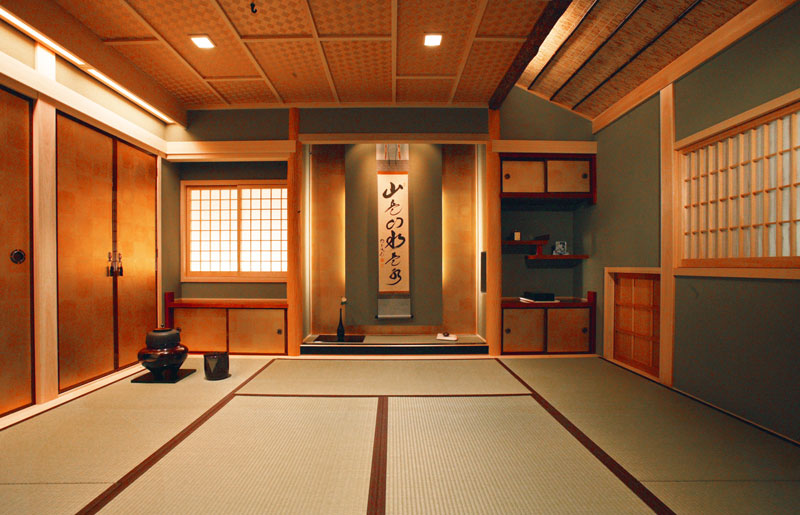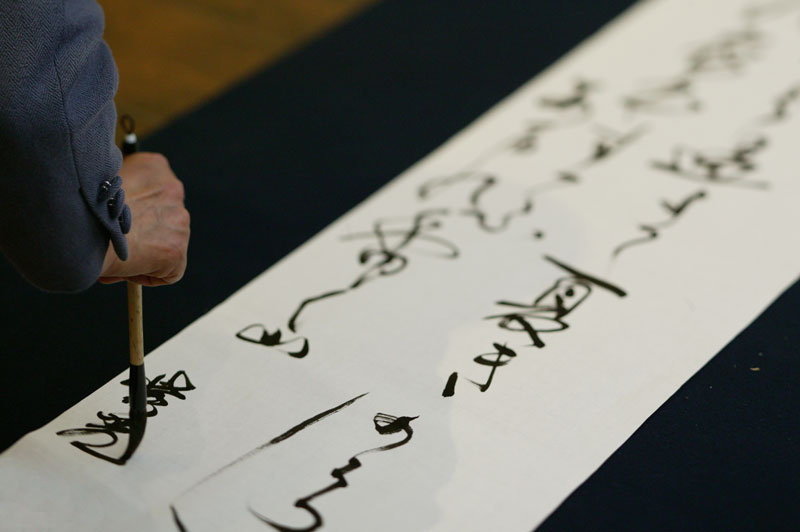Located in the heart of Ginza, the Hisui Tokyo culture school offers students the chance to learn the way of four of Japan’s most celebrated traditions.
Feet positioned about shoulder-width apart, right leg in front of my left, I hold the katana with two hands and point it towards the goza target—a rolled-up tatami mat that represents my imaginary opponent. I take a step forward, raise the sword over my head, and swing downward, shifting my cutting angle to the right as I bring the blade down. It’s a clumsy cut, and the sword buries itself into the layers of textile.
My instructor calls out: “You’re cutting to the side. The blade should be striking the goza at a sharper angle.”
I try again, this time adjusting my stroke to bring it closer to vertical. The katana swishes through the air, cleaving a neat slice through the upper part of the target, which falls to the ground with a soft clatter.
“Good. Again!” Two more cuts follow, each shaving off a diagonal from my opponent.
(Suihou Sumida, swordsmanship teacher at Hisui Tokyo, demonstrates the six cutting directions of battou)
I’m neither dreaming, nor have I managed to find my way into The Matrix, despite the picture-perfect setting: neatly brushed tatami mats, sword racks—which hold practice weapons, as well as the razor-sharp swords that I have just been taking my first attempts with—and elaborately painted screens to the side of the room. In fact, I’m fewer than five minutes away from Ginza Station, at Hisui Tokyo.
This Japanese culture school, which first opened its doors in May of this year, offers classes in four different traditional disciplines: swordsmanship, or batto; tea ceremony, or sado; waso, the art of putting on a kimono, and shodo, calligraphy. (Before my lesson in swordsmanship with Suihou Sumida, I had been treated to a bowl of matcha—powdered green tea—carefully prepared by tea ceremony instructor Tomoko Yamamoto, and presented to me in a tea room as carefully appointed as the sword dojo was.)
(It may take you a while before you’re quite at this level with your tea ceremony preparation, but this is what it could look like.)
At first glance, the mix of classes offered at Hisui seemed like a strange one. After all, what does cutting a rolled-up tatami mat with a sword have to do with artfully preparing and serving tea, or learning how to properly wear a kimono or write beautiful characters? As school director Kazutomo Kaito explained, the answer to this question lies in the spirit that a good practitioner will bring to any of these arts: a respect for the forms and the techniques, but also for the meaning behind them.
For example, when first training with the sword, a student learns to pause briefly before drawing the weapon completely from the sheath. Sumida-sensei explains that, during the time of the samurai, this pause before launching into single combat gave each side the opportunity to decide whether they truly wanted to fight. And, as Kaito points out, even the way in which the server walks toward the guest in a tea ceremony has direct similarities with the light movements that a sword practitioner uses when shifting around the target.
Many of the school’s students, both male and female, have the opportunity to recognize this spirit for themselves, as the flexible lesson system at Hisui allows students to train in sword—and any other discipline—at the same time. This opportunity to experience so many facets of Japan’s ancestral spirit, combined with the school’s central location, makes Hisui Tokyo a dream come true for die-hard fans of Japanese culture and curious newcomers alike.
If you’d like to try your hand at one, or all four, of the disciplines that Hisui Tokyo offers, you can schedule an “Experience Day,” with prices running from ¥7,000 (one art) to ¥20,000 (all four). For detailed information about course schedules, teachers, and membership rates, visit their website at hisui-tokyo.com.
Hisui Tokyo
Chuo-ku, Ginza 4-3-13, Koizumi Biru 5F (see map below)
Tel: 0120-666-107 | Web: hisui-tokyo.com











